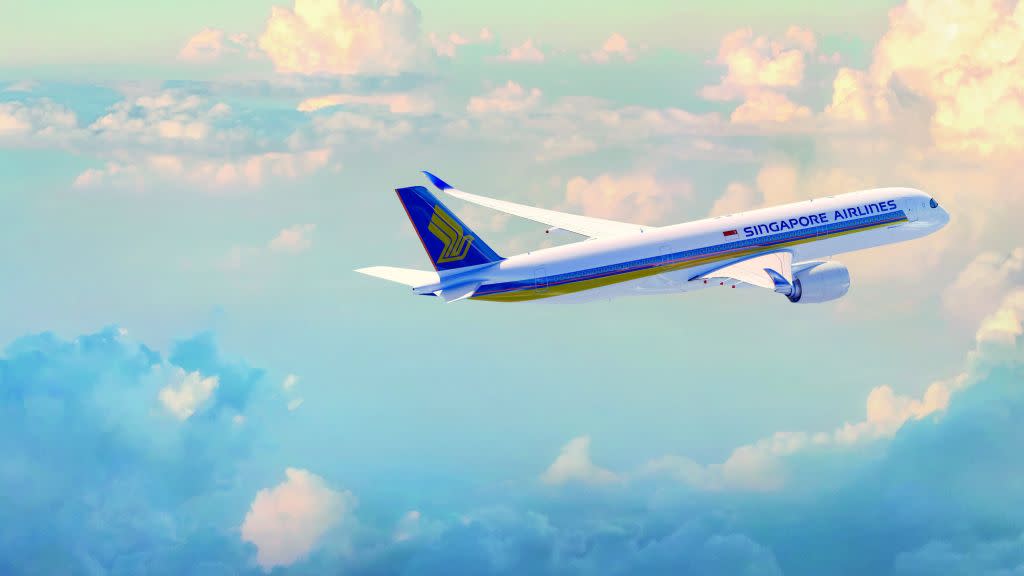The world’s longest flights are making a comeback

For some time, one of the major themes of commercial air travel has been frugality.
Seat pitches declining, budget fares and basic economy dominating, the 747 retiring, and airlines in a fierce battle to see who can offer the most competitive routes at the cheapest fares.
But one new trend seems to be balking that. A slew of “ultra long haul” routes are entering the market in 2018, offering travelers non-stop flights in aircrafts configured especially for flying times of 17, 18, or even 19 hours. The question is: Will passengers prize the convenience of a nonstop route enough to put up with diabolically long flight times—and what is likely to be a higher fare.
This week, United debuts its second-longest flight from its hub in Houston to Sydney, which clocks in at 8,596 miles and 17 hours and 30 minutes. For an American carrier, it is second in length only to the Los Angeles to Singapore route United launched in October. Meanwhile, in March, Qantas will debut its Perth to London route, providing the first nonstop service between Australia and Europe clocking in at more than 9,000 miles. Singapore Airlines is also re-entering the ultra long haul market, resurrecting their New York to Singapore nonstop route, as well as a nonstop Los Angeles service, both later this year.
So why now? According to John Grant, senior analyst at air travel intelligence firm OAG, the “stars have aligned” for the ultra long haul moment to happen now, thanks to “the price of fuel, the level of technology we’ve reached in terms of aircraft performance, and the fact that these new aircrafts are made of composite materials which means they are a lot lighter to fly.”
Indeed by late 2013, all ultra long haul routes had been terminated due to lack of passenger demand and unsustainable fuel costs. But thanks to a new generation of hyper-efficient, twin engine jets, those cost barriers are receding—and the competition for bragging rights of longest commercial flight are heating up. When they launch, Qantas’ Perth to London route and Singapore Airline’s Singapore to New York one will be neck and neck for the crown, de-throning Qatar Airway’s Auckland to Doha route.
Singapore Airlines is the launch customer for the Airbus A350-900ULR (the ULR stands for “ultra long range”), which vice president of public relations James Boyd describes as a “mission built” aircraft that was specially “designed to connect Singapore and the US cost efficiently.” Meanwhile, the Boeing 787-9 Dreamliner is being used for the aforementioned Qantas and United routes. Both of these aircrafts are known for their enhanced passenger experience and longer range—and for being leaner alternatives to the higher-capacity Airbus A380 jumbo-jet, the shaky future of which was just bolstered by a deal with Emirates.
Boyd says that beyond the fuel efficiency of the new long range A350-900, the aircraft includes improvements in cabin pressurization, humidity control, and airflow management that make a 19 hour flight—and the jet lag that follows—more bearable. He adds that long flight times also require rethinking some of the in-flight service elements, such as flexibility in meal times and the pace of service.
And in terms of who these flights are for? “More than anything, this is a time machine for business travelers,” Boyd said. “It is the kind of product that is going to appeal to time stretched travelers that are interested in boarding just once, as well as more corporate and premium leisure travelers.”
Indeed, the”premium heavy“configuration and design of many of these flights gives you a clue of the kind of passenger the airlines are going after. Grant describes Singapore’s Airline’s new A350 as “a boutique aircraft for boutique routes.” Meanwhile, the Dreamliner used by both Qantas and United may be the same one that’s allowed low-cost, long-haul carrier Norwegian to become a competitor on the transatlantic route, but at 252 seats on United’s plane and 236 on Qantas, they are overall far roomier than than Norwegian’s 344 seat configuration.
“You can’t do these types of sectors with what we would describe as a high density configuration,” Grant says, noting that these planes are making more space for premium-ticketed passengers. “It’s the seats, it’s the luggage, it’s the catering—you need more space for crew to rest. This also has to appeal to a premium business and premium leisure traveler who is prepared to pay a little bit more.”
But it’s not really the low cost carriers (LCCs) like Norwegian that these new ultra long route operators are up against, according to David Bentley, chief airport analyst of CAPA Centre for Aviation
“The real competitors here are not the LCCs, but the carriers based in the Middle East,” such as Emirates and Qatar “who offer global connections through their countries’ hubs,” Bentley says. “In that case, I’m not sure how much [ultra long haul carriers] can do in terms of product differentiation as the standard is very high anyway on those carriers. [Their] USP is going to be the time-saving element, but how important that is—when weighed against the unpleasantness of a 17 or 18-hour non-stop flight—is yet to be measured.”
Indeed, to hear Grant describe it, the ultra long haul flight trend, even if a success, will remain quite niche. Even those who can afford the extra price premium, he says, might not even want it.
“There is no way in the world that anyone naturally sleeps for 19 hours, so it might not be appealing for people even who can afford it,” Grant said. “Meanwhile, competitors are not just gonna walk out of the way. They’ll be doing some discretionary things upgrading people to first class, or offering a nice stop-over in Dubai. The competitive environment Is fierce enough that the market will be interesting.”
Sign up for the Quartz Daily Brief, our free daily newsletter with the world’s most important and interesting news.
More stories from Quartz:

